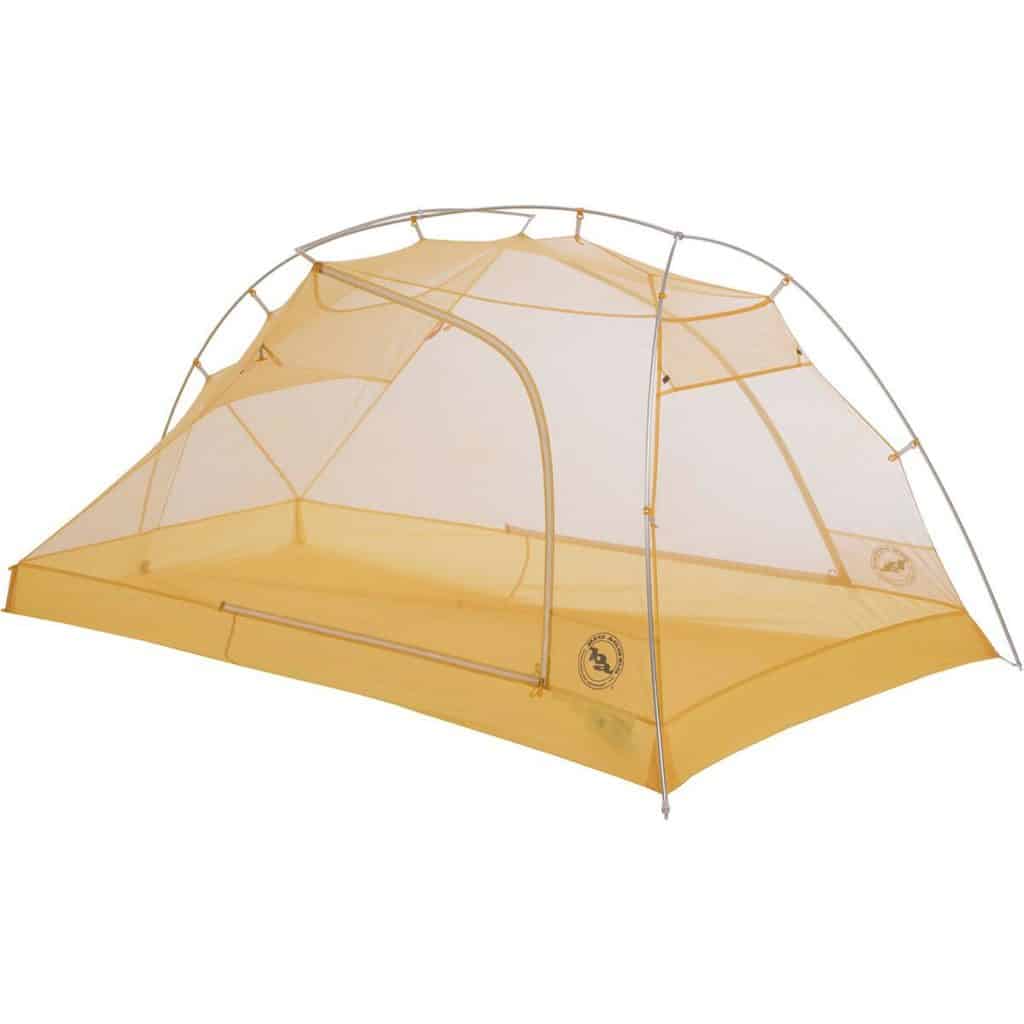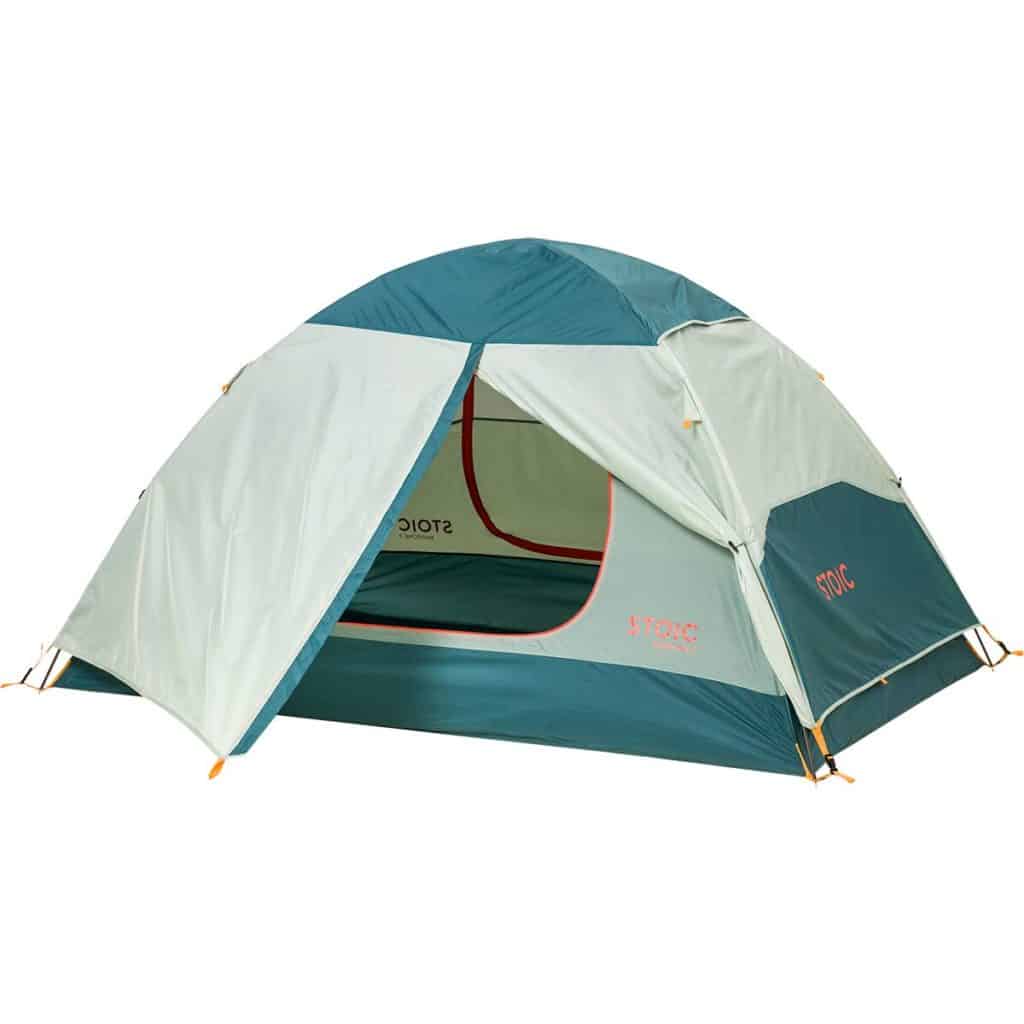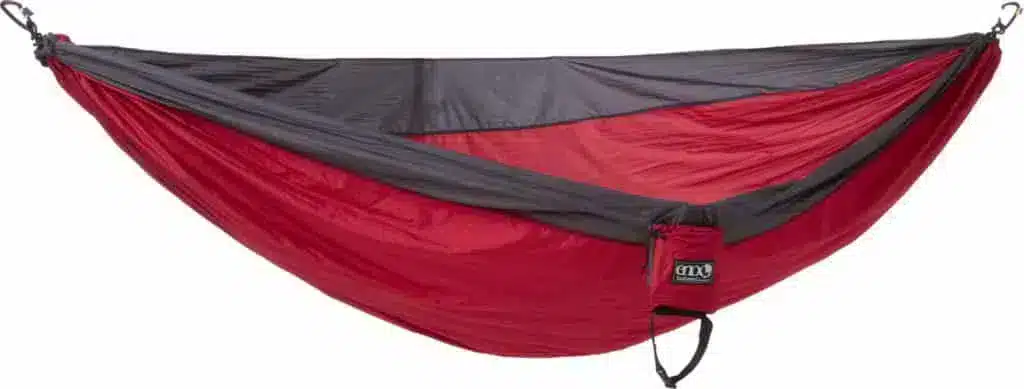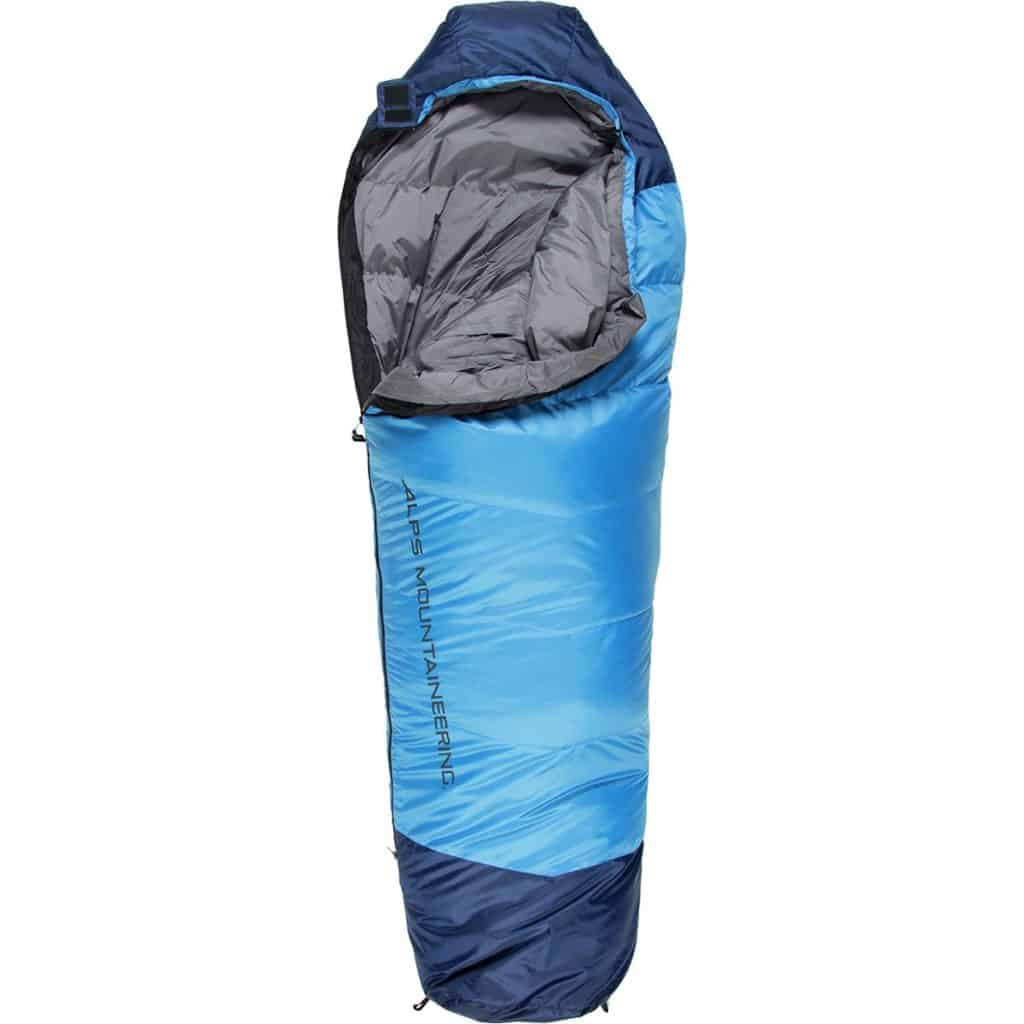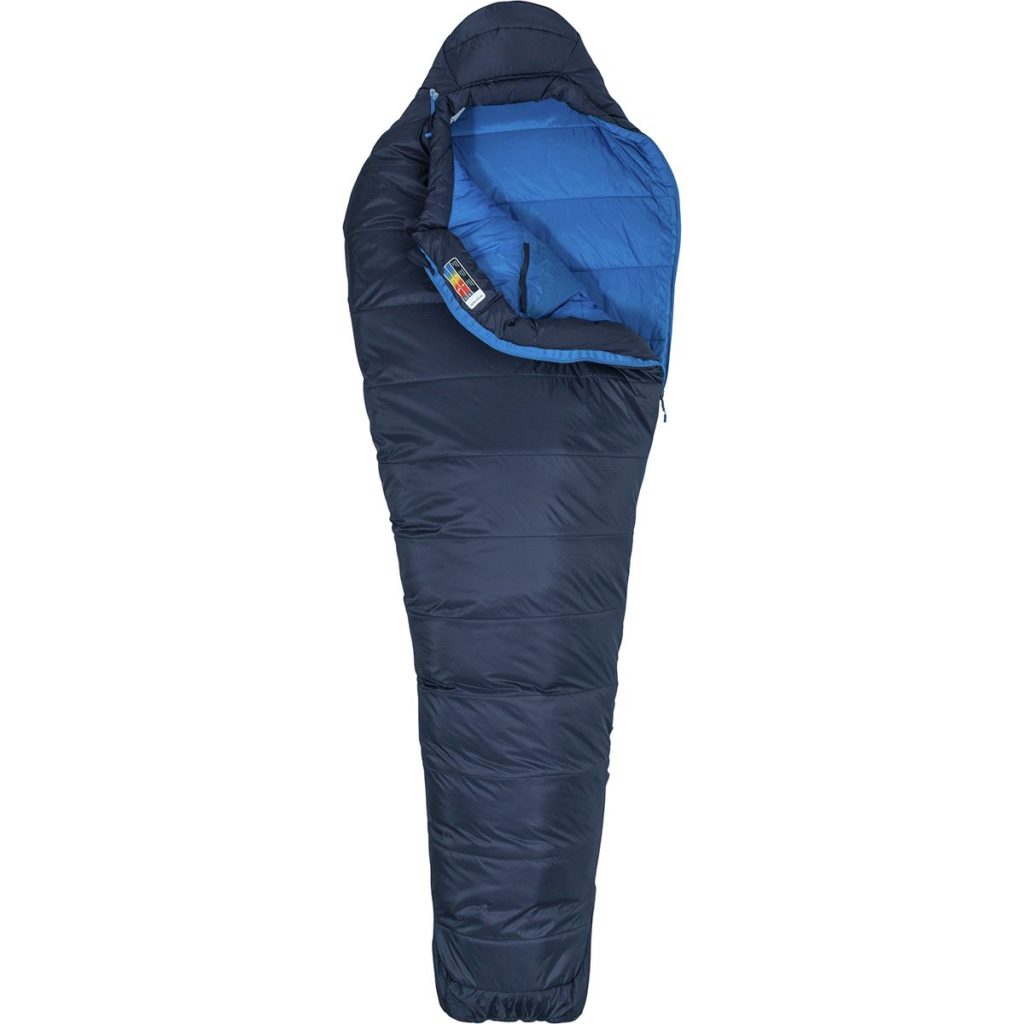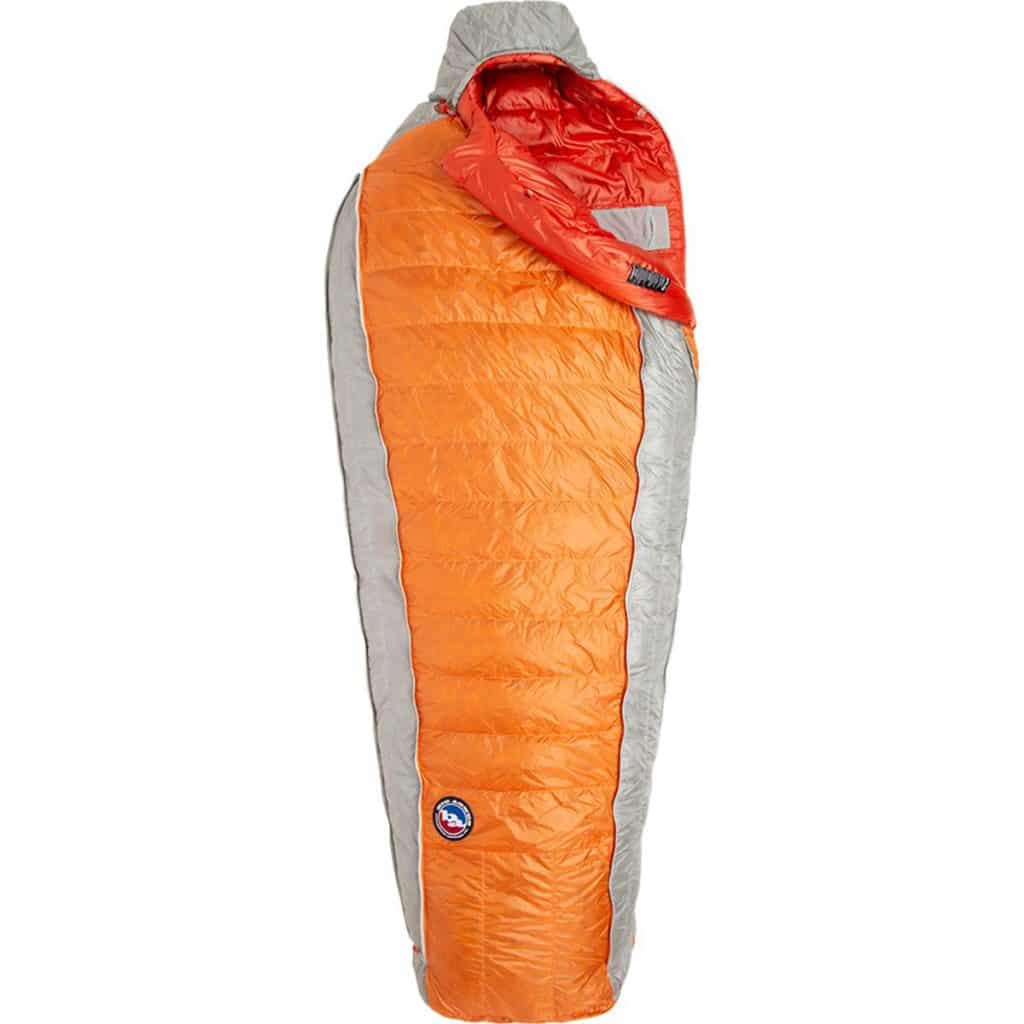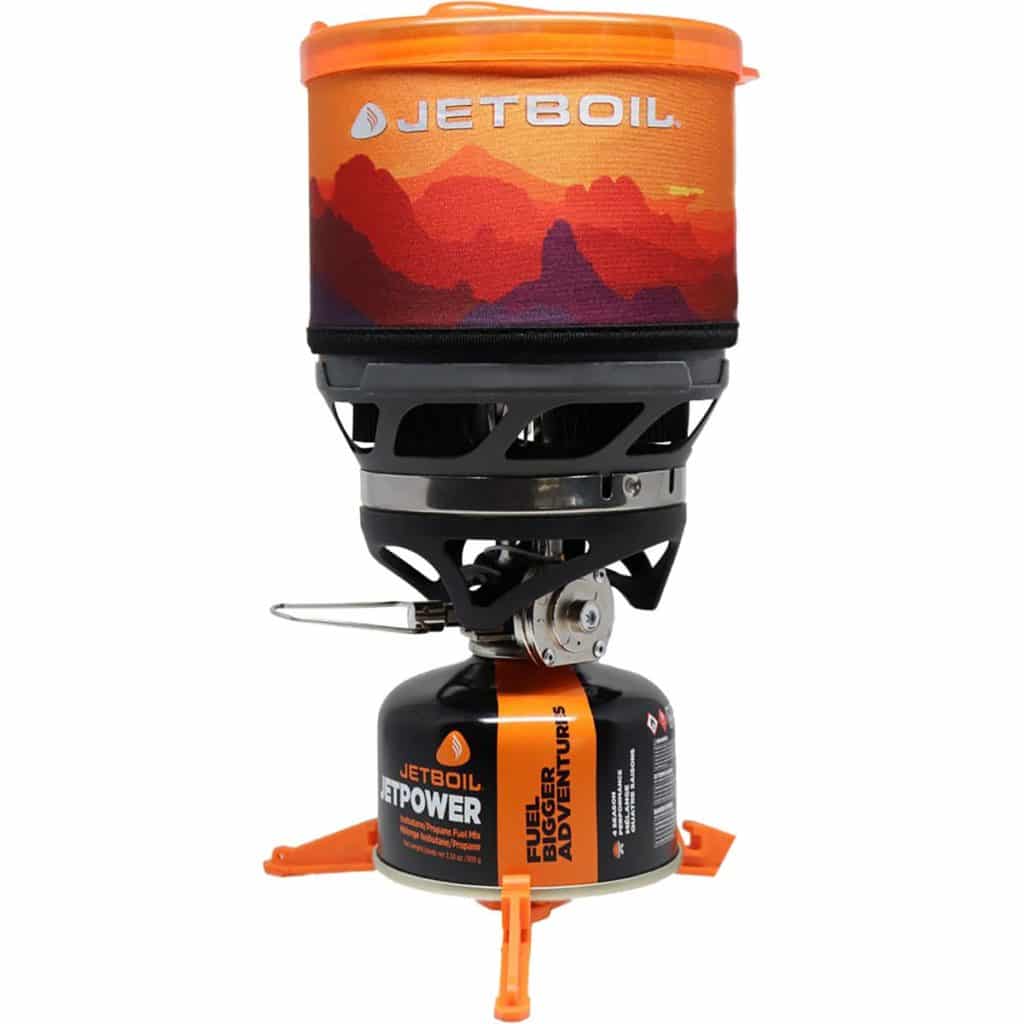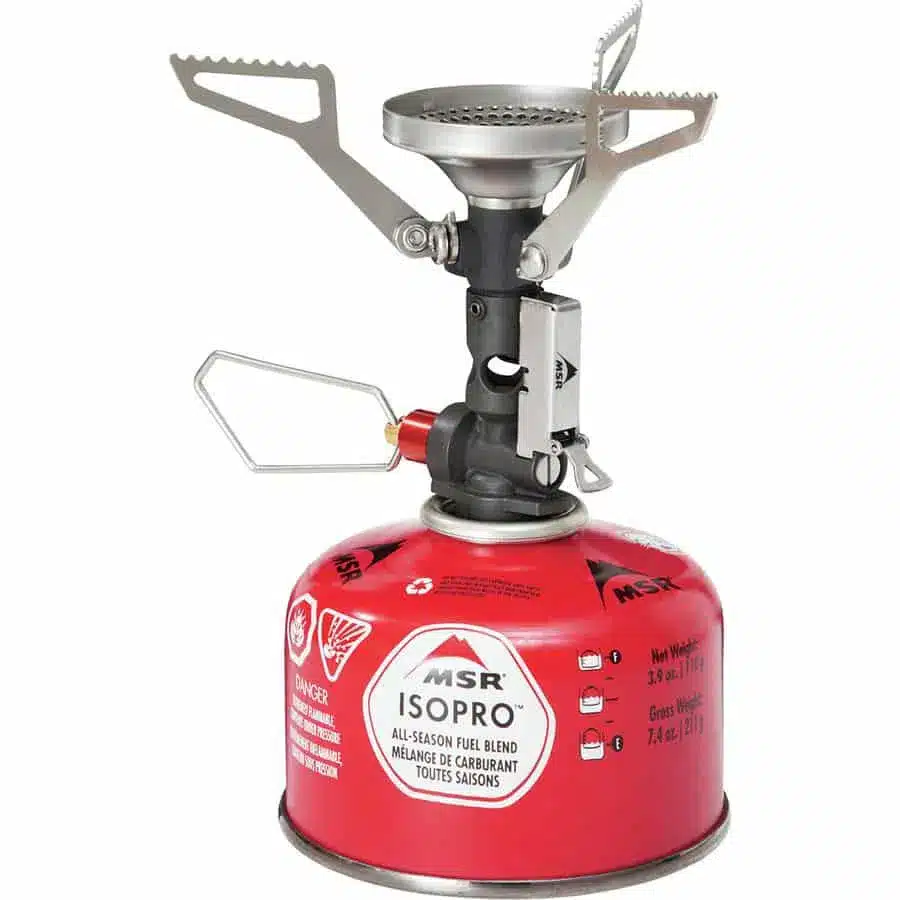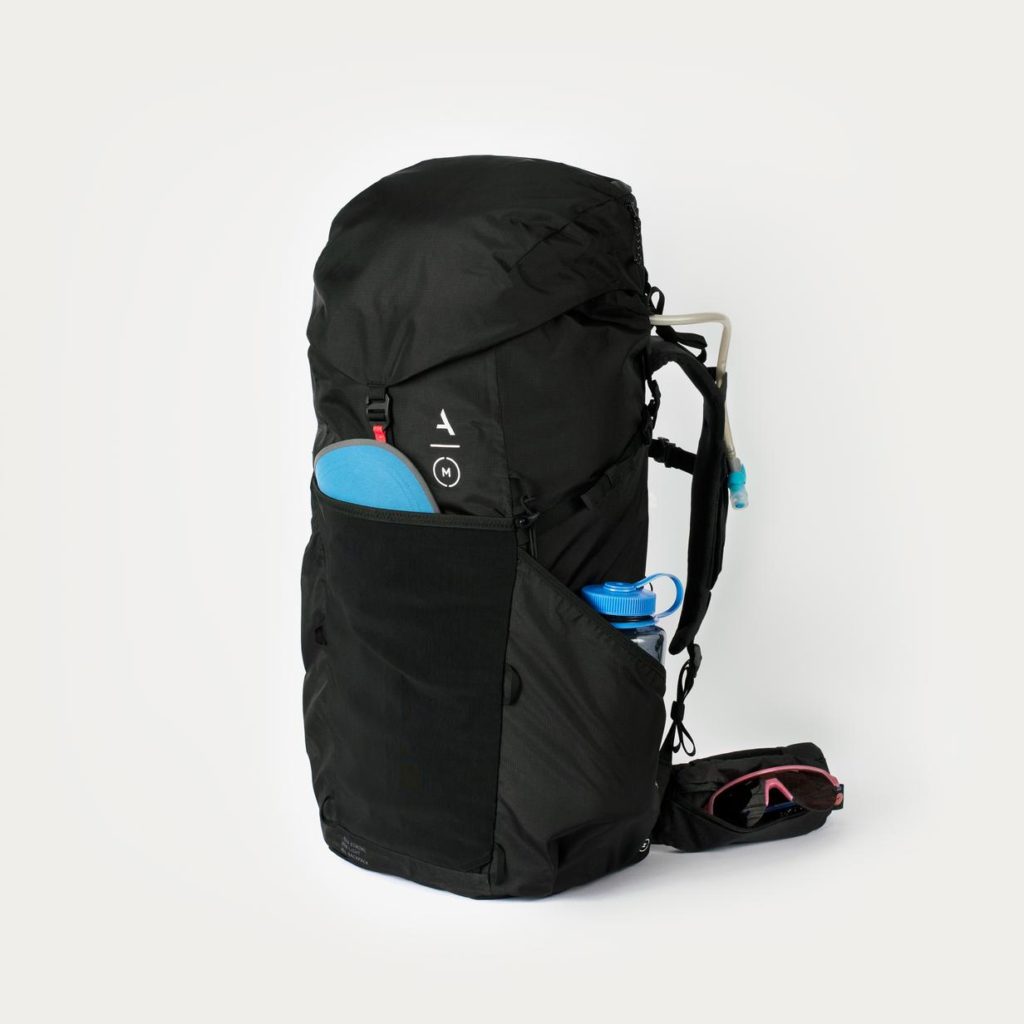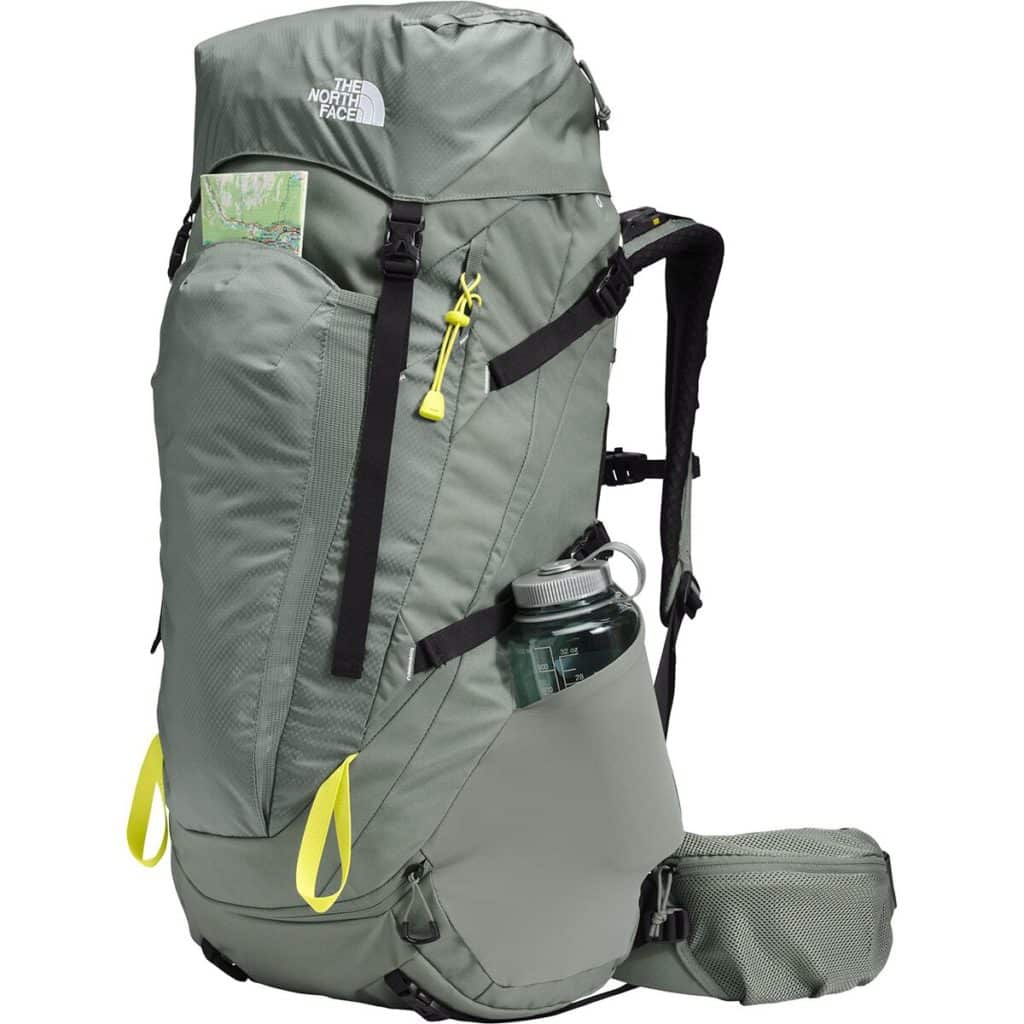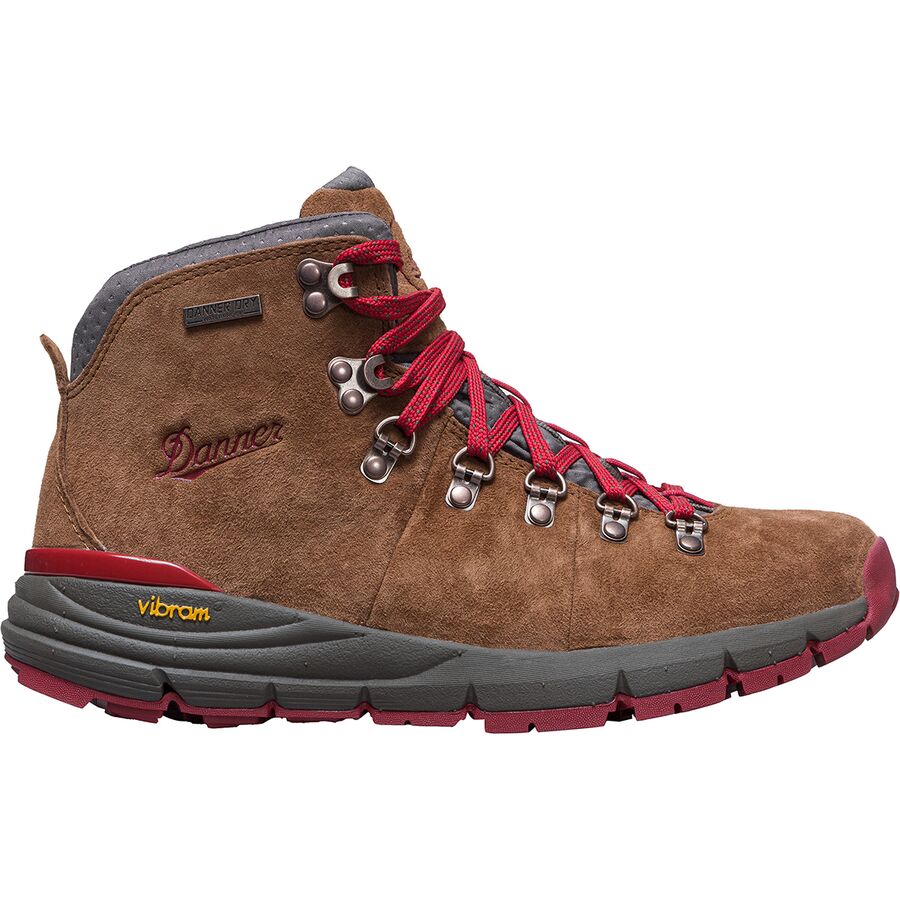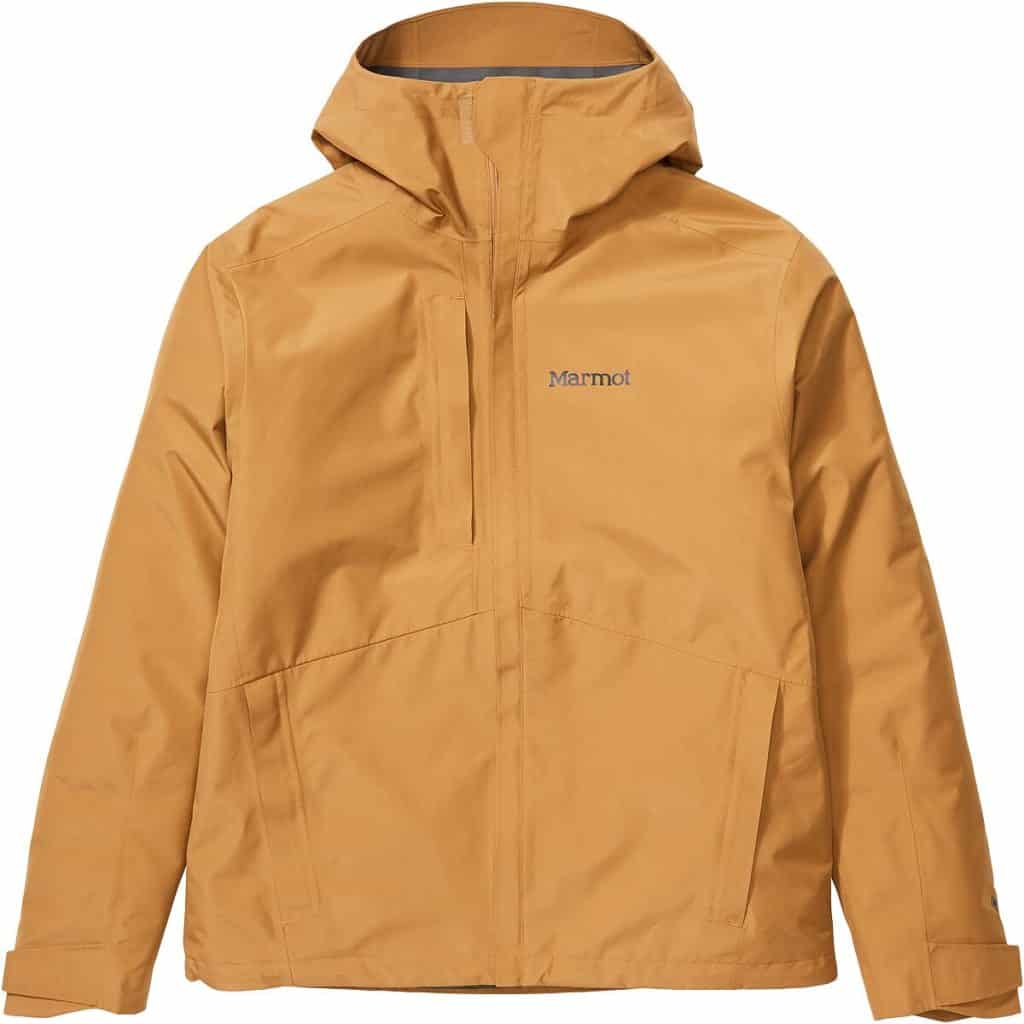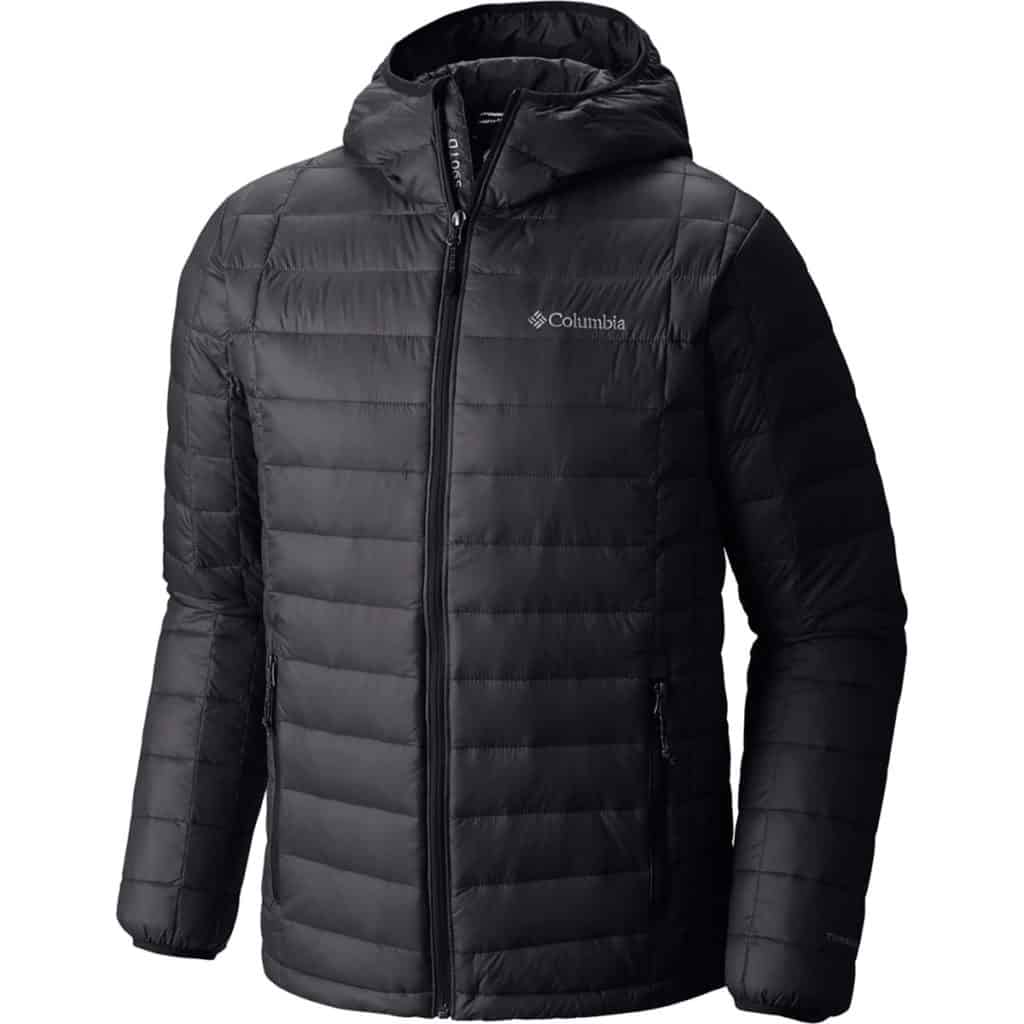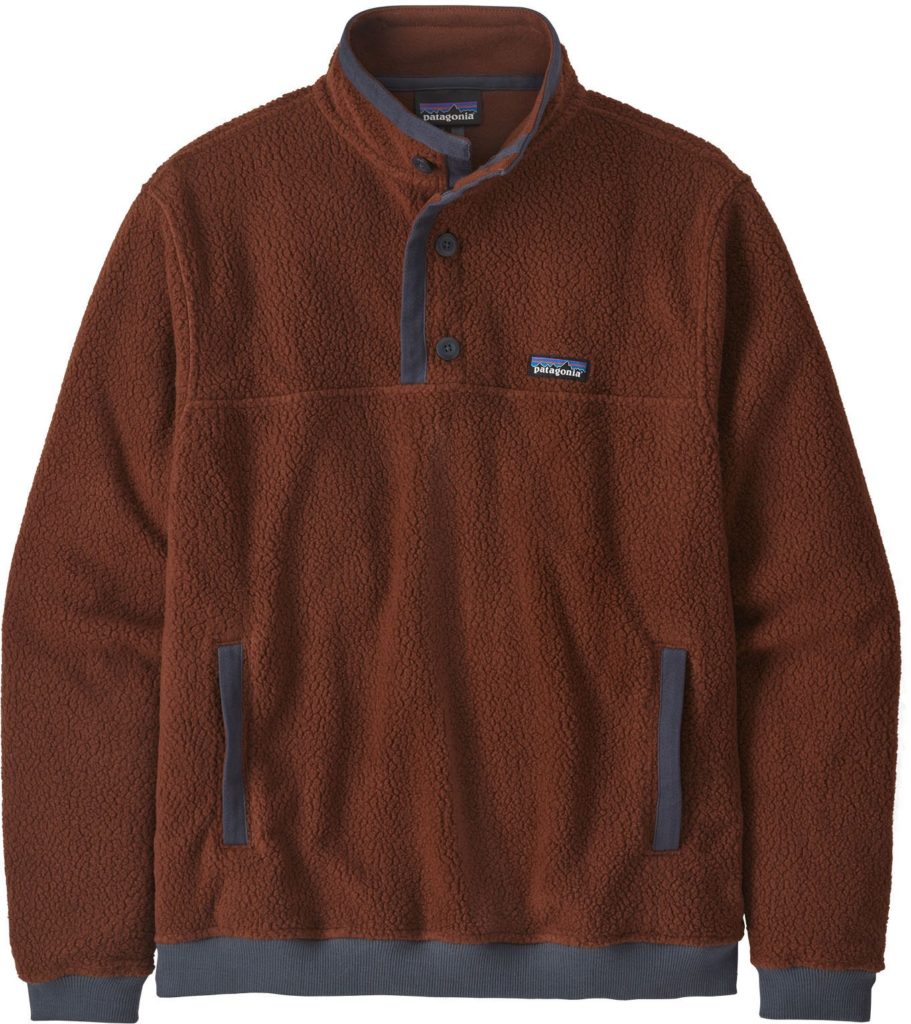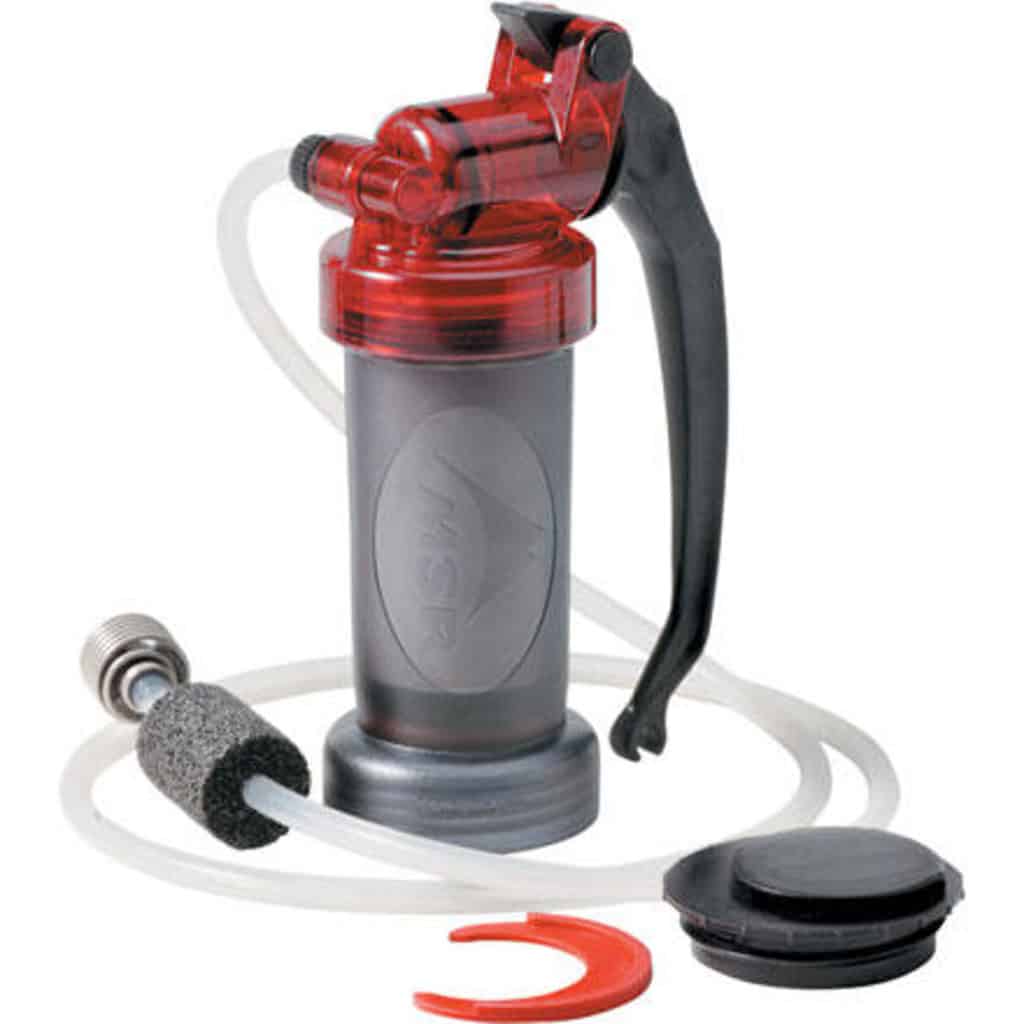Backpacking the Lena Lake Trail to Lena Lake Campground
Washington has lots of amazing alpine lakes, and whether you’re backpacking or looking for a day hike, Lena Lake is a gorgeous spot where you can camp right on the edge of the lake! This is a great trail for beginner backpackers (it was actually my first backpacking trip ever!), so this guide will tell you everything you need to know to backpack the Lena Lake trail and stay at the Lena Lake campground.
We’ll talk about the trail, tips and what to bring for backpacking, and everything you need to know for a great night at the Lena Lake campground!
Head’s up: some of these links are affiliate links, so I get a commission if you make a purchase (at no cost to you). But that’s great, because I was going to share anyway, and this helps me keep making free guides for you!
Pin this photo to save this guide to backpacking the Lena Lake Trail for later!
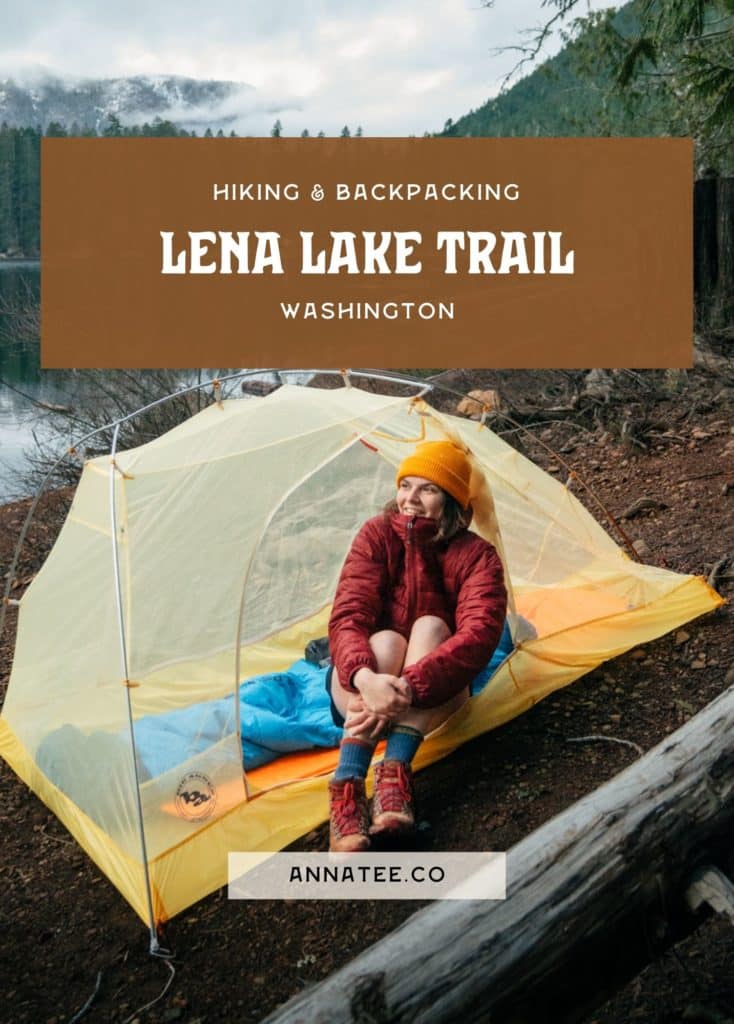
About the Lena Lake Trail
The Lena Lake trail is a good introduction to backpacking, because while it’s a little bit of a challenge, it’s not too strenuous for beginner backpackers! It’s also amazing as a day hike.
You can hike the lower Lena Lake trail, which is located in the Olympic National Forest – this trail ends at the Lena Lake campground, where you can stay for the night. But, you also have the option of continuing to the upper Lena Lake trail, which is in Olympic National Park (dogs aren’t allowed in national park territory). The upper trail is more strenuous, as it’s steeper and less maintained. I stuck to the lower Lena Lake trail for my backpacking trip, but you can also set up camp at the Lena Lake campground and take the steep climb to Upper Lena Lake with less gear!
Lower Lena Lake Trail Stats
Distance: 7 miles round trip
Elevation Gain: 1,630 feet
Difficulty: moderate
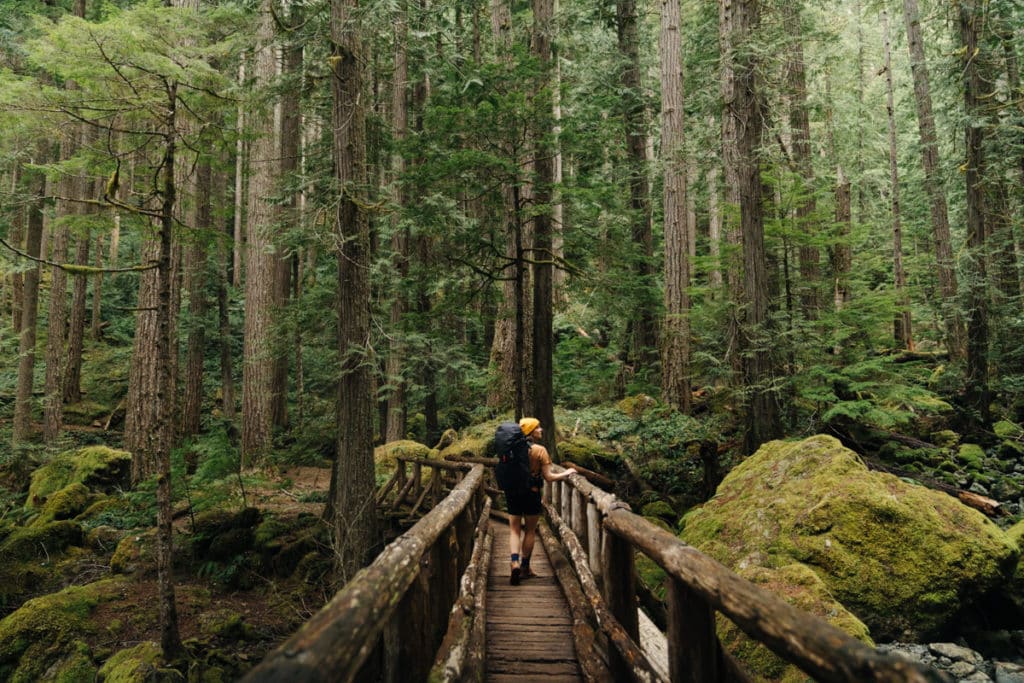
In this photo: MTN Light Camera Bag
Leave No Trace at Lena Lake
Anytime you’re outdoors, it’s essential that you practice Leave No Trace (LNT). LNT is a set of seven principles that help us understand our impact on the outdoors – because while we usually have good intentions, the environment is more fragile than we think, and one snap-second decision can cause damage to the environment that will take the earth years, even decades to repair.
Leave No Trace means enjoying the outdoors without disrupting nature, as much as it’s possible to do so. Here are the 7 principles of LNT, and how they apply when you hike the Lena Lake trail!
- Plan ahead and prepare – read this guide, make sure you know have the right gear, and be prepared for any weather.
- Travel and camp on durable surfaces – stay on the trail to avoid trampling grasses and plants!
- Dispose of waste properly – don’t leave trash, or anything else, behind. Pack it out!
- Leave what you find – I know it can be tempting to take a cool rock or leaf, but leave these things where they belong! Animals often use these, and if everyone takes one, the trail won’t be as pretty.
- Minimize campfire impacts – you can make campfires at the Lena Lake campground, if there’s no burn ban in place. Put it out when you’re done!
- Respect wildlife – avoid feeding or approaching birds or any other animals you might see.
- Be considerate of other visitors – yield to uphill hikers, and be respectful – no speakers or loud music.
Do you need a permit to backpack the Lena Lake Trail?
Lena Lake is a great backpacking trail because you don’t need a permit, or any reservations – it’s great for last minute trips or for beginner backpackers! You can camp at the Lena Lake campground (reached by the Lower Lena Lake trail) without a permit. If you want to continue to Upper Lena Lake, you’ll need a backcountry permit, because it’s within Olympic National Park.
But, while you don’t need a permit for the Lena Lake campground, you will need a pass to park at the trailhead!

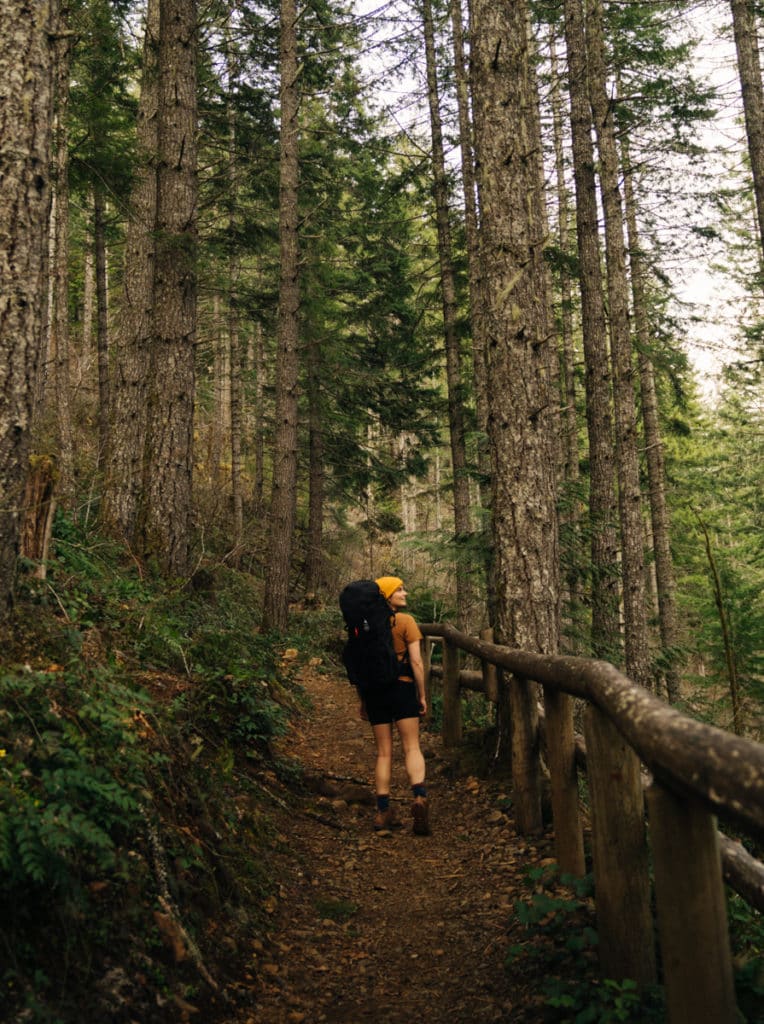
Parking at the Lena Lake Trailhead
Lena Lake Trailhead Coordinates: 47.3757417, -122.0117894
Whether you’re going for a day hike or an overnight trip, a pass is required to park at the Lena Lake trailhead.
A forest pass allows you to park at the trailhead – you can get a day pass for $5, or an annual pass for $30. Keep in mind that if you’re camping, you’ll need a day pass for both days. You won’t be able to get a pass at the trailhead, so this needs to be purchased ahead of time! You can get it online, or pick up a day pass at REI or at a forest service station.
If you have an America the Beautiful Pass, which gets you into any national park in the country for an entire year, this also works for national forests! This one costs $80, and is a great deal if you visit national parks often.
The Best Time for Backpacking Lena Lake
The Lower Lena Lake trail doesn’t get very much snow, so you can usually hike any time of year! December through February will likely have some wet snow on the trail, but it usually doesn’t pile up very much. There is however, a lot of rain.
The most popular time for backpacking Lena Lake is summer – when the weather is warm, sunny, and dry! The Olympic Peninsula of Washington is known for rainy weather, so while backpacking in spring and fall will give you a more private spot to camp, you definitely need to be prepared for rain.
Because this trail is so popular, I recommend backpacking in spring or fall to avoid the crowds, and make sure to get to the Lena Lake Campground early to get a spot!

Hiking to Lena Lake
Once you’ve parked and you’re ready to start your hike, here’s an overview of the hike to Lena Lake!
The trail is a pretty steady ascent the entire way – not too steep, but with a heavy backpack you’ll feel the incline a bit. The trail begins by climbing through old growth forest, with ferns and lush greenery.
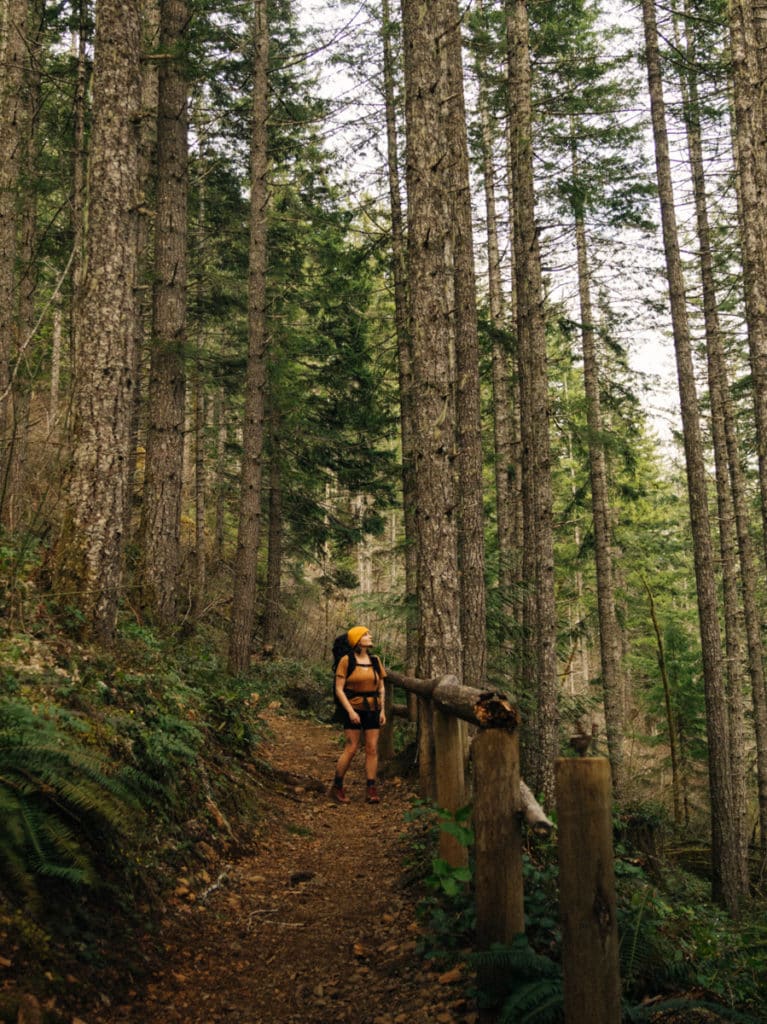

As you get closer, there are a few wooden bridges that cross over streams, and you’ll hear the river down below and catch occasional glimpses of the rushing water!

After you cross the second bridge, which has a little waterfall running under it, you’ll come to a sign similar to the one at the trailhead – keep going, and there’s another wooden sign pointing you to Lena Lake! When you see this, you’ll know you’re almost there.

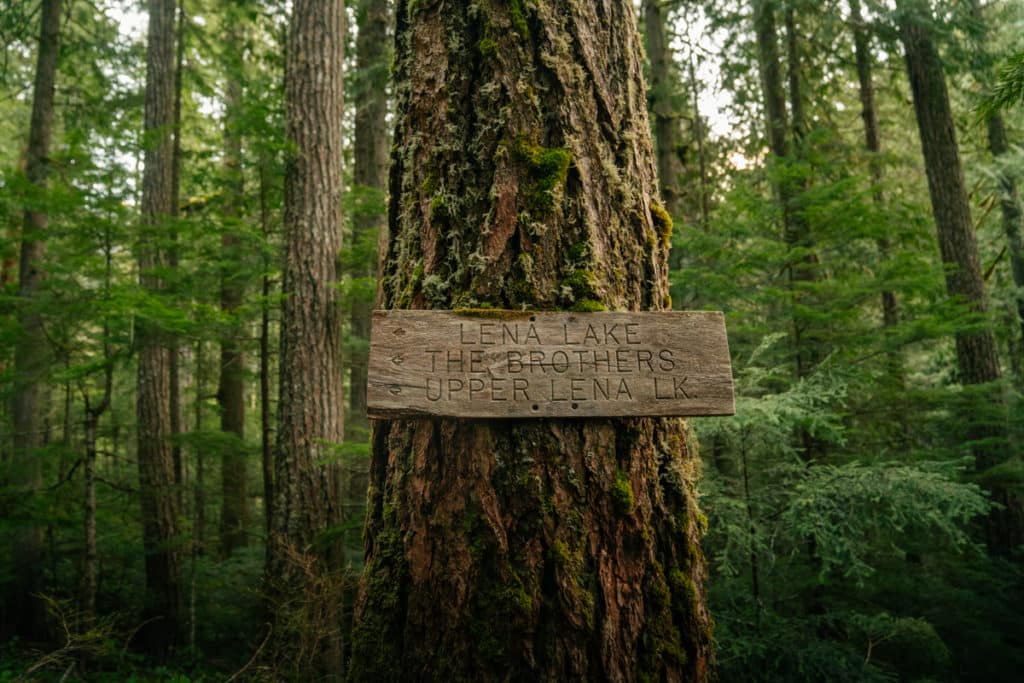
If you look carefully, you can catch some glimpses of the lake through the trees to your right as you hike this part of the trail. Soon, you’ll come to an overlook above Lena Lake! If you’re just doing a day hike, this is a really great place to stop and have a snack.

If you’re camping, descend just a little bit to reach the Lena Lake campground.
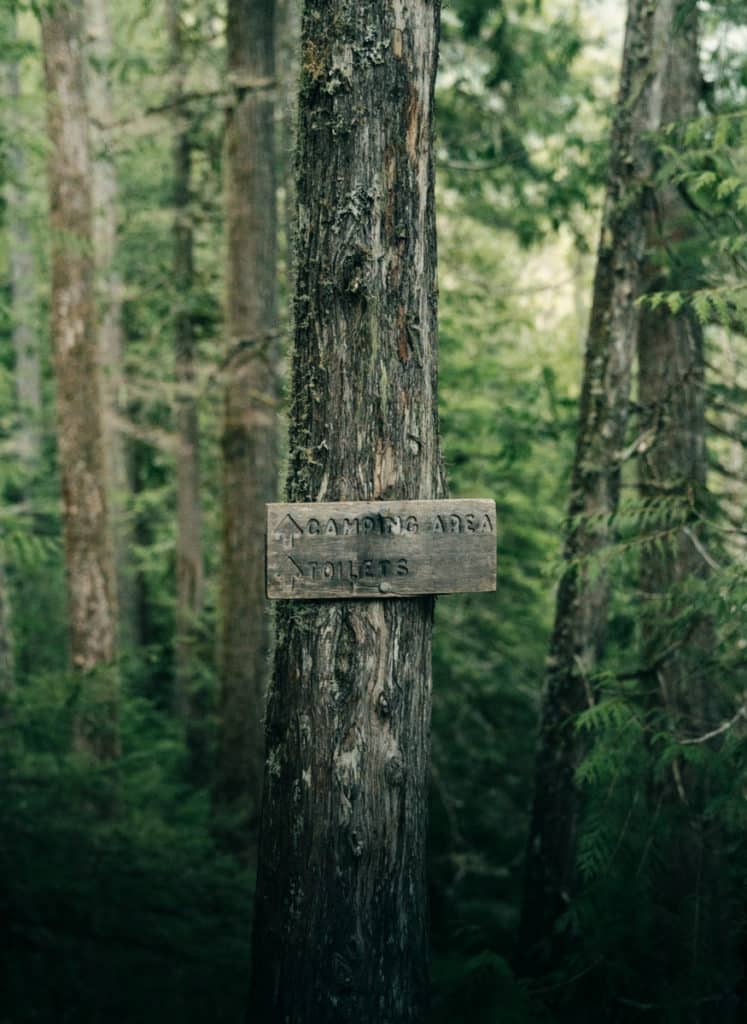

The Lena Lake Campground
Now that you’ve reached the Lena Lake campground, walk around a bit to find a spot! There are several around the lake, and getting here early is the best way to ensure you find one – this campground is really popular. I backpacked this trail on April 1st, and wasn’t expecting to see many people – but when I got to the Lena Lake campground, I had to search for a while before I found a private spot to set up camp! Especially if you’re going in the summer, plan ahead and get there early!
This is a free campsite, and mostly undeveloped – but there are two outhouses.
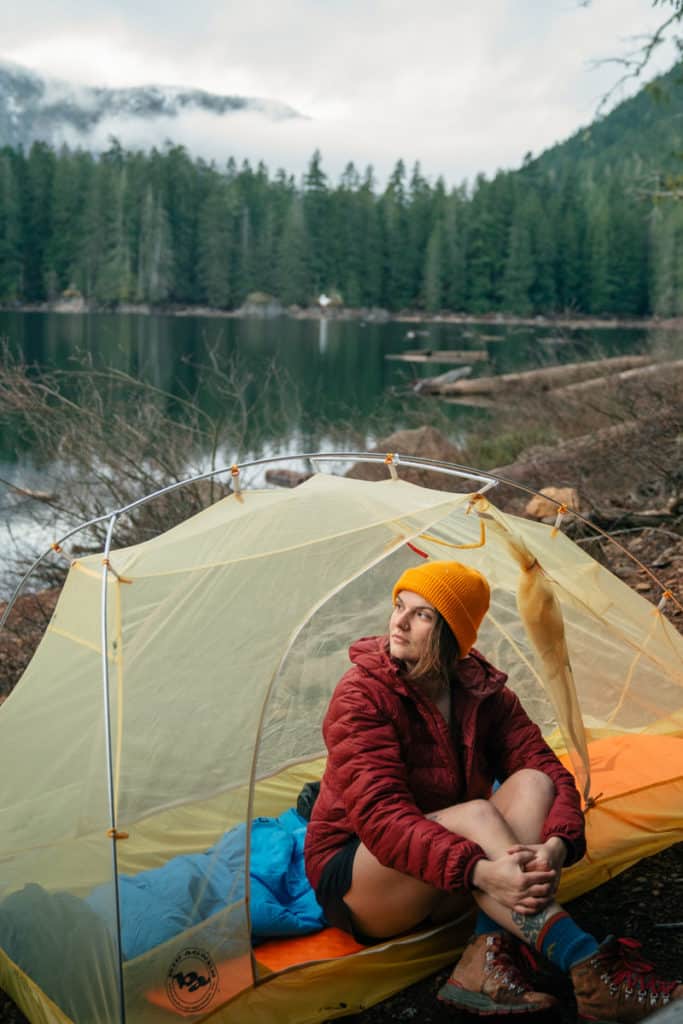
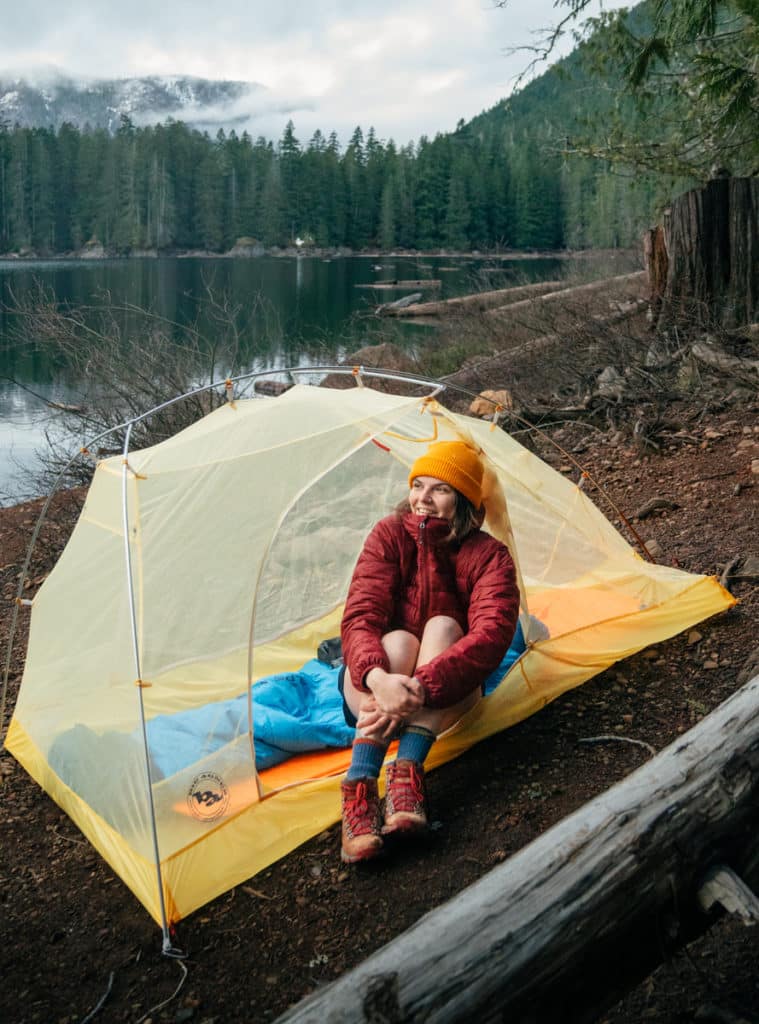
In these photos: Big Agnes tent, Columbia jacket, Danner boots, ALPS sleeping bag, Sea to Summit sleeping pad
What to Bring for Backpacking at Lena Lake
When you backpack to the Lena Lake campground, here’s what you’ll need to bring!
Tent
When you’re backpacking Lena Lake, you’ll need a place to sleep!
I have the Big Agnes Tiger Wall tent, which is amazing and weighs less than 2 pounds. The Stoic Madrone Tent is a more budget friendly, but heavier option.
If you’re backpacking alone, I really recommend trying out hammock camping! Sleeping in a hammock is incredibly comfortable – you’ll never go back to a tent. The ENO hammocks are definitely the best, and you can get a rain cover as well. Though I wouldn’t sleep in a hammock with two people, the double nested hammocks are comfier, and if you sleep in it, it’s big enough to wrap around and protect you from bugs.
Bonus Tip: A lot of these links are for my favorite place to buy outdoor gear – Backcountry. If you install the free Lolli extension on your browser, you can earn free Bitcoin when you shop online at certain retailers, including Backcountry. You can transfer it to a crypto wallet, or just cash out to your bank account.
Sleeping Bag
When you choose a sleeping bag, you’ll need to make sure it’s warm enough for your trip, along with being lightweight for backpacking.
I use an ALPS down sleeping bag, which is really affordable compared to most down sleeping bags, but it’s light enough for me, and has kept me warm! The Marmot Ultra Elite 20 is a great synthetic bag that’s lightweight.
If you really want to keep your pack weight low, the Big Agnes Torchlight weighs less than 2 pounds!
Sleeping Pad
A sleeping pad is a necessity for comfy nights!
I have the Sea to Summit UltraLight Sleeping Pad, which packs up small and weighs less than a pound.
The NEMO equipment Switchback Sleeping Pad folds up small and is also great for backpacking, and if you’re going to be camping in colder weather, the NEMO Insulated Sleeping Pad helps with staying warm.
Camping Stove
Having a camping stove allows you to have hot meals, and hot coffee!
The Jetboil MiniMo Stove is probably the lightest option there is, and it’s really popular with backpackers. I use the MSR Pocket Rocket stove, which packs up nice and small!
You’ll also need some cooking utensils, and I recommend the GSI Outdoors Cook Set.
Backpack
You need somewhere to put all your hiking and camping gear!
My favorite backpack is the Alex Strohl Mountain Light, which is made for backpacking with photo gear. If you don’t need storage for camera stuff, a backpack that’s around 40 liters will be enough for one night – but of course, this also depends on you and your preferences. The North Face Terra is a 40L backpack that’s great for overnight trips.
For a day hike, you won’t need something so big – I recommend an Osprey Hikelite.
Hiking Shoes
Sturdy shoes are a must for this hike, and I recommend waterproof ones – it rains often, and the trail is often muddy. Good traction is essential!
My favorite hiking boots are my Danner boots – they’re cute, comfortable, and waterproof! I also love hiking in my Chacos, but I would only recommend them for summers, when the trail is dry. I did pack my Luna sandals with me to wear once I got to the campground – they’re lighter than Chacos, and having shoes to wear that aren’t heavy hiking boots is a must for me.
Rain boots are another great option for muddy or wet conditions, and are definitely the easiest to clean.
Layers
PNW weather is known for being unpredictable, and it’s always best to wear layers when hiking in the mountains. When you’re backpacking, temperatures will definitely drop at night, so having warm layers is a must.
A rain jacket is always a good idea when hiking in Washington, and the Marmot Minimalist Jacket is a great lightweight, waterproof option. For the cold, I love my Columbia puffy jacket – it’s lightweight, but keeps me warm – and it also makes a good pillow for backpacking and camping! For added warmth and layering, a Patagonia fleece is always a good addition.
Hydration!
Especially when you’re hiking or exploring outdoors, it’s important to stay hydrated! Single use water bottles are, of course, terrible for the environment, so avoid that and bring a reusable one!
For hiking, the CamelBak water reservoirs are convenient and easy – they can fit in your hiking backpack for water on the go. Nalgene water bottles are great for day to day. There is water available on the Lena Lake trail, so instead of packing all your water with you, you can also bring a water filter!
More Adventures Near the Lena Lake Trail
After you’ve backpacked the Lena Lake trail, check out these posts for more Washington adventures!
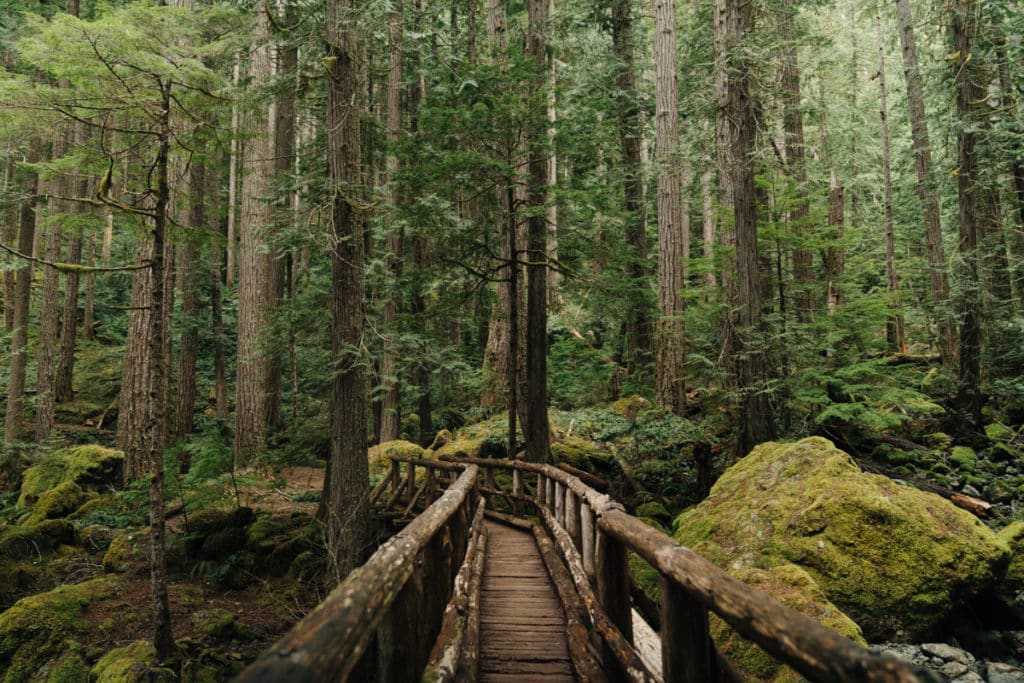
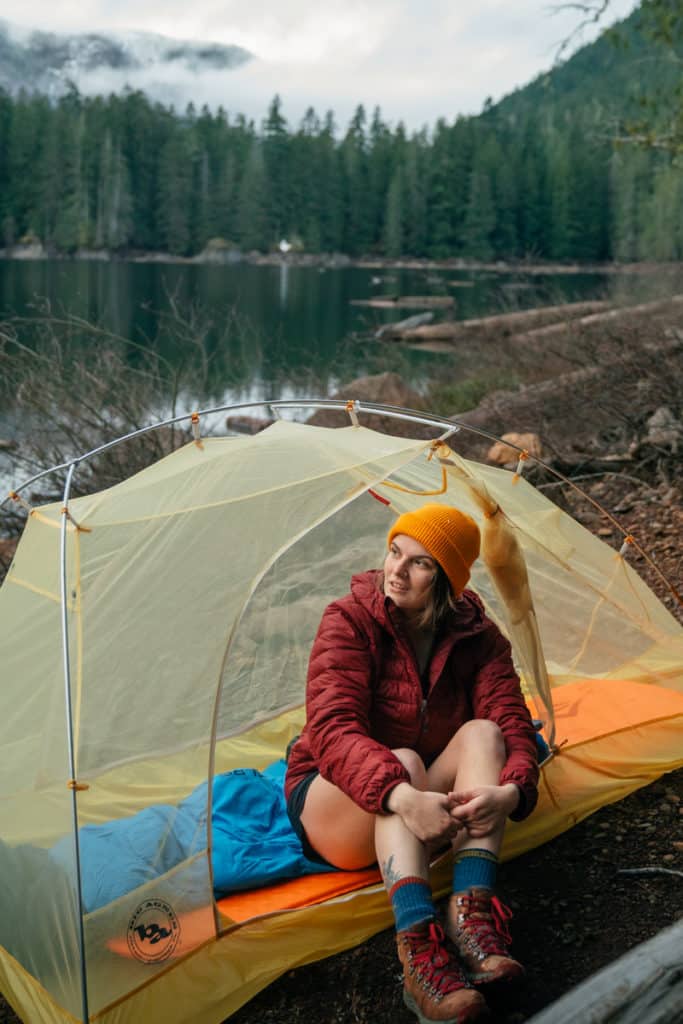
Pin any of these photos to save this guide to backpacking the Lena Lake Trail for later!



